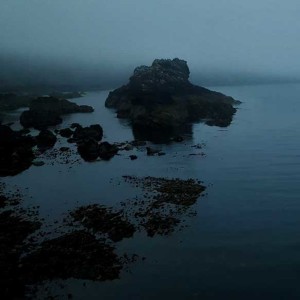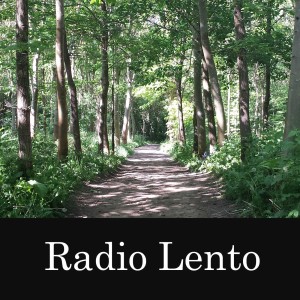
Up steep steps from the sandy beach, and a birds-ear view of ocean breakers from a thicket, perched half-way up the cliff. Several hours to go before low tide. Directly ahead slow rolling waves, breaking over outcrops of large craggy rocks.
It's the dead of night, here on Coldingham Sands. An empty, uninhabited land, under a sky of almost astronomical darkness. An area of land mostly free of human things. Quiet, enough to hear the rumbling undersides of the breaking waves. Time. Gradually shifting contours, as the tideline recedes.
We captured this natural aural landscape and all its uninterrupted spatialness last month near St Abbs in Scotland. As we walked the cliff path to set up the equipment late the previous evening, the silence in the sky was the thing that struck us most. It created a palpable, almost velvety sensation in us. This sense of silence is not, as we've discovered, a purely aural experience. It's something that seems to be felt rather than heard, although it does come from what is heard. Microphones can't record silence, they can only capture actual vibrations, and silence is the absence of vibrations. What's come out from this particular sound recording expedition though, is a very precise sound-picture of the shapes, over time, that waves make as they first roll onto the rocky margins of land. Silence is for sound recording like good light is for photography, the more there is, the greater the detail that is captured in the picture.
More Episodes
 2022-07-09
2022-07-09
 2.8k
2.8k
 2022-06-25
2022-06-25
 2.3k
2.3k
 2022-06-18
2022-06-18
 2.6k
2.6k
 2022-06-11
2022-06-11
 1.9k
1.9k
 2022-06-04
2022-06-04
 2.6k
2.6k
 2022-05-28
2022-05-28
 2.0k
2.0k
 2022-05-21
2022-05-21
 2.0k
2.0k
 2022-05-14
2022-05-14
 2.8k
2.8k
 2022-05-07
2022-05-07
 4.4k
4.4k
 2022-04-30
2022-04-30
 2.3k
2.3k
 2022-04-23
2022-04-23
 1.9k
1.9k
 2022-04-16
2022-04-16
 2.4k
2.4k
 2022-04-09
2022-04-09
 2.4k
2.4k
 2022-04-02
2022-04-02
 2.2k
2.2k
 2022-03-26
2022-03-26
 2.2k
2.2k
 2022-03-19
2022-03-19
 2.2k
2.2k
 2022-03-12
2022-03-12
 2.5k
2.5k
 2022-03-05
2022-03-05
 2.3k
2.3k
 2022-02-26
2022-02-26
 2.3k
2.3k
Create your
podcast in
minutes
- Full-featured podcast site
- Unlimited storage and bandwidth
- Comprehensive podcast stats
- Distribute to Apple Podcasts, Spotify, and more
- Make money with your podcast
It is Free
- Privacy Policy
- Cookie Policy
- Terms of Use
- Consent Preferences
- Copyright © 2015-2024 Podbean.com






